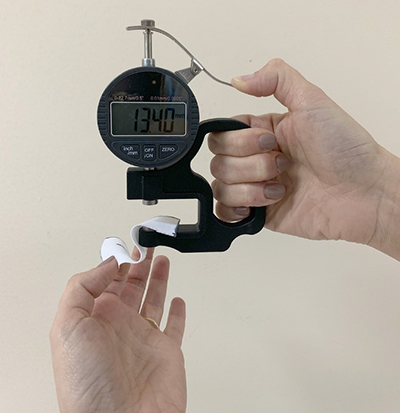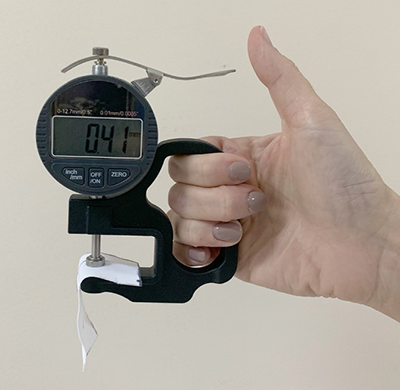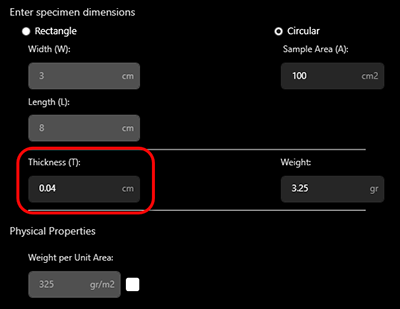Measure Fabric Thickness
Important:
-
Use one of the rectangular specimens initially prepared for bending & stretch testing. To prepare specimen, use the specimen preparation kit (rotary cutter, cutting mat and stencil) supplied as a part of the FTU.
-
The digital thickness gauge used for the fabric thickness measurement should be calibrated prior to the testing. The calibration provides you with reliable accuracy for measurements.
-
Since the thickness measurement does not cause the specimen destruction, the tested specimen can be used for further tests.
To perform fabric thickness testing:
-
Open the spring clamp of the digital thickness gauge and put one of previously prepared rectangular fabric specimens in between gauge foots.

-
Release the spring clamp and perform the fabric thickness measurement as shown below.

-
Perform several similar measurements in different areas of the specimen to compensate non-uniformity of thickness.
-
Convert the obtained value to centimeters and enter the thickness value into the Thickness edit box as shown below.

Notes:
-
The fabric thickness measurement is performed according to the spirit of the standard ASTM D1777 - 96(2015), representing the industry common practice. The standard describes averaging thickness on different places of the fabric and applying different pressure according to the fabric type (knit or woven). The standard also describes use of different foot for various fabric types.
-
The full compliance with the standard requirements provides you with the redundant precision. For fabric simulation purposes, the simple thickness measurement provided by the digital thickness gauge yields sufficient results.